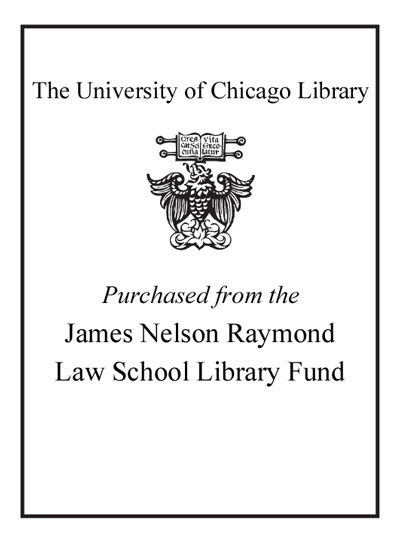UNCITRAL guide on the implementation of a security rights registry /
Saved in:
| Imprint: | Vienna : United Nations, c2014. |
|---|---|
| Description: | viii, 160 pages ; 24 cm |
| Language: | English |
| Subject: | |
| Format: | Print Book |
| URL for this record: | http://pi.lib.uchicago.edu/1001/cat/bib/10396562 |
Table of Contents:
- Introduction. A. Purpose of the present guide and its relationship with the UNCITRAL Legislative Guide on Secured Transactions
- B. Terminology and interpretation
- C. Key objectives and fundamental policies of an efficient registry
- D. Overview of secured transactions law and the role of registration
- 1. General
- 2. Concept of a security right
- 3. Creation of a security right
- 4. Third-party effectiveness of a security right
- 5. Priority of a security right
- 6. Extended scope of the registry
- 7. Registration and enforcement of security rights
- 8. Conflict-of-laws considerations
- 9. Notice registration
- 10. Coordination with specialized movable property registries
- 11. Coordination with immovable property registries
- 12. International coordination among national security rights registries
- 13. Transitional considerations: applicability of a new Law to prior security rights
- 14. Legislative drafting considerations
- I. Establishment and functions of the security rights registry.
- A. General remarks
- 1. Establishment of the registry
- 2. Appointment of the registrar
- 3. Functions of the registry
- 4. Additional implementation considerations
- 5. Registry terms and conditions of use
- 6. Electronic or paper-based registry
- B. Recommendations 1-3
- II. Access to registry services.
- A. General remarks
- 1. Public access
- 2. Operating days and hours of the registry
- 3. Access to registration services
- 4. Verification of registrant's identity, evidence of grantor authorization and scrutiny of the content of the notice not required
- 5. Access to search services
- B. Recommendations 4-10
- III. Registration.
- A. General remarks
- 1. Time of effectiveness of the registration of a notice
- 2. Period of effectiveness of the registration of a notice
- 3. Time when a notice may be registered
- 4. Sufficiency of a single notice
- 5. Unique registration number to be assigned to initial notices
- 6. Grantor-based organization and retrieval of registered notices
- 7. Organization and retrieval of registered notices by serial number
- 8. Preserving the integrity and security of the registry record
- 9. Liability of the registry
- 10. Registry's duty to send a copy of the registered notice to the secured creditor
- 11. Secured creditor's duty to send a copy of the registered notice to the grantor
- 12. Amendment of information in the public registry record
- 13. Removal and archiving of information from the public registry record
- 14. Language of notices and search requests
- B. Recommendations 11-22
- IV. Registration of initial notices.
- A. General remarks
- 1. Introduction
- 2. Grantor information
- 3. Secured creditor information
- 4. Description of encumbered assets
- 5. Period of effectiveness of the registration of a notice
- 6. Maximum amount for which the security right may be enforced
- 7. Effect of errors or omissions on the effectiveness of the registration of a notice
- B. Recommendations 23-29
- V. Registration of amendment and cancellation notices.
- A. General remarks
- 1. Amendment notices
- 2. Cancellation notices
- 3. Effect of inadvertent expiration or cancellation of a registered notice
- 4. Effectiveness of amendment or cancellation notices not authorized by the secured creditor
- 5. Compulsory amendment or cancellation
- B. Recommendations 30-33
- VI. Search criteria and search results.
- A. General remarks
- 1. Search criteria
- 2. Search results
- B. Recommendations 34 and 35
- VII. Registration and search fees
- A. General remarks
- B. Recommendation 36
- Annexes.
- I. Terminology and recommendations
- II. Examples of registry forms
- III. Decision of the United Nations Commission on International Trade Law and General Assembly resolution 68/108
- A. Decision of the United Nations Commission on International Trade Law
- B. General Assembly resolution 68/108.

